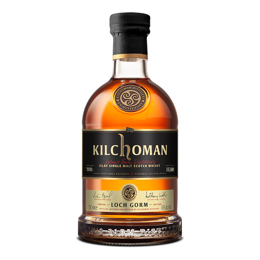Smoked Whiskey
Lagavulin 12 Y.O. Whisky 700ml
- 1
- 2
Frequently Asked Questions
01 What is peated whisky and how is it made?
The "junk" piece of information of the day states that the mineral called coal has gradations of chemical composition and quality. Its optimal form is the girl's best friend, i.e. the diamond. It is just pure coal (C - carbon), obviously not used as fuel! Graphite, hard coal and lignite follow, with less and less carbon content. Last comes peat, which abounds in the subsoil of wetlands. It is famous as a cheap fuel. Its classic use - of course not everywhere - is the drying of barley, during the malting process. Malt produced in this way acquires smoky aromas, which later pass into the whisky.
02 Which are the main organoleptic characteristics of peated whisky?
Smoky aromas and spicy flavors dominate peated whisky. Earthy elements of soil and grass are also evident. Hints of leather and pepper are very common. In general, whiskies of this type are considered organoleptically heavier than "conventional" ones. Chemical substances called phenols are responsible.
03 Which regions of Scotland are famous for peated whisky?
In terms of whisky production, Scotland is divided into five regions. Some add a sixth region, that of the islands. The island of Islay, although an island, does not belong to the region of islands, but is a region itself. It is the indisputable champion in the production of peated whisky. It is worth noting, however, that amazing peated whiskies are produced, more or less, in every other region, as well.
04 How can I choose the appropriate peated whisky as a present?
Try to find out the general tastes of your loved one. If you know she/he likes strong flavors (e.g. bacon, roquefort, metsovone), don't hesitate to offer her/him a strongly peated whisky, such as Ardbeg, Kilchoman or Lagavulin 16 Y.O. If you just want to introduce her/him to the wonderful world of peated whisky, then go for something milder, such as Laphroaig 10 Y.O, Caol Ila 12 Y.O. or Talisker 10 Y.O.
05 Are there special serving techniques for peated whisky?
To bring out the aromatic temperament of a peated whisky, just add a few drops of water or no more than one ice cube. More water or more ice will dilute its main characteristics. If the peated whisky is used in a cocktail (e.g. in Penicillin), then best add it at the end, in order to reveal its aromas more easily.

























